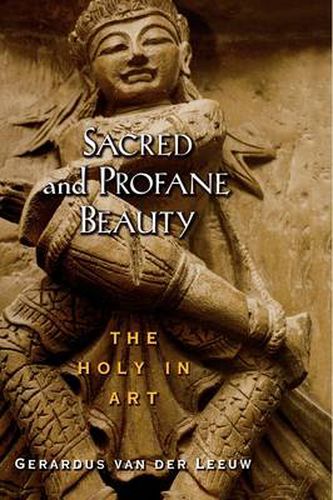Readings Newsletter
Become a Readings Member to make your shopping experience even easier.
Sign in or sign up for free!
You’re not far away from qualifying for FREE standard shipping within Australia
You’ve qualified for FREE standard shipping within Australia
The cart is loading…






Gerardus van der Leeuw was one of the first to attempt a rapprochement between theology and the arts, and his influence continues to be felt in what is now a burgeoning field. Sacred and Profane is the fullest expression of his pursuit of a theological aesthetics, surveying religion’s relationship to all the arts – dance, drama, literature, painting, sculpture, architecture, and music. This edition makes this seminal work, first published in Dutch in 1932, newly available. A new foreword by Diane Apostolos-Cappadona analyzes the continuing relevance of van der Leeuw’s thought. Van der Leeuw’s impassioned and brilliant investigation of the relationship between the holy and the beautiful is founded upon the conviction that for too long the religious have failed to seriously contemplate the beautiful, associating it as they do with the kingdom of sensuality and impermanence. Similarly it has been alien to literati and aesthetes to reflect upon the holy, for they choose to consider this physical world to be permanent, and therefore to be glorified through beauty alone. In truth, as van der Leeuw undertakes to show in Sacred and Profane Beauty, the holy has never been absent from the arts, and the arts have never been unresponsive to the holy. Whether one considers the Homeric epics, the dancing Sivas and Vedic poems, the sacred wall paintings of ancient Egypt, the primitive mask, or the range of sacred arts developed out of Latin and Byzantine Christianity,
primordial creation in the arts was always directed toward the symbolization and interpretation of the holy. The fact that in our day this original connection is obscured and the artistic impulse is more generally regarded as wholly individualistic and autonomous does not contradict van der Leeuw’s thesis; indeed, the breakdown of the unity of the holy and the arts is central to his thesis. Van der Leeuw was the rare thinker who combined profundity of insight, grace of style, and a willingness to take daring intellectual chances. In Sacred and Profane, he describes each of the arts in its original unity with the religious and then analyzes its historical disjunction and alienation. After a penetrating investigation of the structural elements within the arts which illumines a crucial dimension of the religious experience, van der Leeuw points toward the reemergence of an appropriate theological aesthetics on which a reunification of the arts could be founded.
$9.00 standard shipping within Australia
FREE standard shipping within Australia for orders over $100.00
Express & International shipping calculated at checkout
Gerardus van der Leeuw was one of the first to attempt a rapprochement between theology and the arts, and his influence continues to be felt in what is now a burgeoning field. Sacred and Profane is the fullest expression of his pursuit of a theological aesthetics, surveying religion’s relationship to all the arts – dance, drama, literature, painting, sculpture, architecture, and music. This edition makes this seminal work, first published in Dutch in 1932, newly available. A new foreword by Diane Apostolos-Cappadona analyzes the continuing relevance of van der Leeuw’s thought. Van der Leeuw’s impassioned and brilliant investigation of the relationship between the holy and the beautiful is founded upon the conviction that for too long the religious have failed to seriously contemplate the beautiful, associating it as they do with the kingdom of sensuality and impermanence. Similarly it has been alien to literati and aesthetes to reflect upon the holy, for they choose to consider this physical world to be permanent, and therefore to be glorified through beauty alone. In truth, as van der Leeuw undertakes to show in Sacred and Profane Beauty, the holy has never been absent from the arts, and the arts have never been unresponsive to the holy. Whether one considers the Homeric epics, the dancing Sivas and Vedic poems, the sacred wall paintings of ancient Egypt, the primitive mask, or the range of sacred arts developed out of Latin and Byzantine Christianity,
primordial creation in the arts was always directed toward the symbolization and interpretation of the holy. The fact that in our day this original connection is obscured and the artistic impulse is more generally regarded as wholly individualistic and autonomous does not contradict van der Leeuw’s thesis; indeed, the breakdown of the unity of the holy and the arts is central to his thesis. Van der Leeuw was the rare thinker who combined profundity of insight, grace of style, and a willingness to take daring intellectual chances. In Sacred and Profane, he describes each of the arts in its original unity with the religious and then analyzes its historical disjunction and alienation. After a penetrating investigation of the structural elements within the arts which illumines a crucial dimension of the religious experience, van der Leeuw points toward the reemergence of an appropriate theological aesthetics on which a reunification of the arts could be founded.